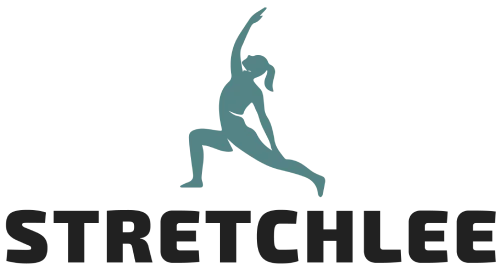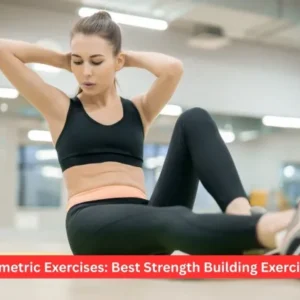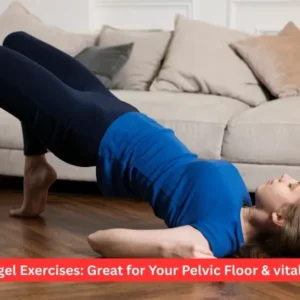When you want to endow your butt with a rounder, fuller, and lifted figure, it is necessary to concentrate on upper glute exercises. The upper glutes, primarily the gluteus medius and the upper fibres of the gluteus maximus, have an immense role to play in creating the shelf appearance, enhancing the posture, and giving the hip stability.
A combination of the right weight training, resistance band exercises, and body weight exercises can help you develop the top of the glutes, avoid the flat, and gain balanced strength in the lower body. The outcome usually reveals itself after a few months, wherein you incorporate overload progressively, nutritionally, and regularly.
What Are the Upper Glutes?
There are three main muscles of the glutes:
- Gluteus maximus – the biggest muscle, which produces the extension and power of the hips.
- Gluteus medius – this is found at the side and top of the glutes, which provides balance and stability to the hips.
- Gluteus minimus- the smallest, supports abduction of the hips as well as stabilises them.
When they refer to the upper glutes, they are typically referring to the upper part of the gluteus maximus and also the gluteus medius. With the development of this area, it forms a more rounded, higher butt profile- popularly known as a glute shelf.
A flat look at the top of the glutes is a common indication that these muscles have not developed. This imbalance can also be corrected by training them specifically by using special exercises of the upper glutes.
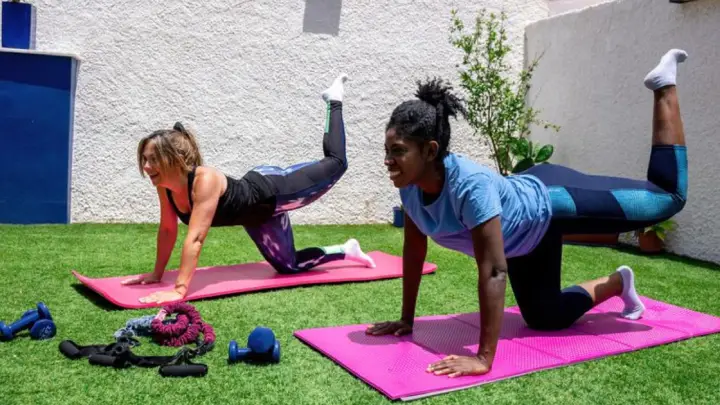
Benefits of Training the Upper Glutes
- Glute Shelf Development- Top glute development is what gives the butt curve that lifts above the butt.
- Improved Hip Stability -Basic to activities such as running, squatting, and sideways movements.
- Less Back Stress- Tough glutes relieve the load on your lower back.
- Athletic Edge -Enhances lateral agility, jumping,g, and sprinting.
- Better Posture -Aids in correcting the pelvis and slouching.
Best Upper Glute Exercises
1. Barbell Hip Thrust (Upper Glute Focus)
A hip thrust is one of the best exercises for the glutes, and with a minor modification, can be used to strike the top of the glutes more strongly.
- Place your hips against a bench and sit on the floor with the barbell on your shoulders.
- Raise torso and feet slightly and bring feet even nearer than a regular high-pull hip thrust.
- Crush on heels and squeeze at the top, keeping the contraction for 2 seconds.
The movement directly develops both the upper and lower glute shelf.
2. Glute Bridges with Band
Like a hip thrust but done on the ground, the glute bridge isolates the glutes with little involvement of the quads. When a resistance band is added, an extra amount of work is pushed to the upper fibers.
- On his back, knees flexed up.
- Stomp heels, push hips, push outwards with knees.
- Maintain tension- this is important in engaging the upper glutes.
3. Bulgarian Split Squat (Forward Lean)
Single-leg exercise is also good for building the glutes, except for leaning forward a bit.
- Keep your front foot forward, with your back foot on a bench.
- Go into a lunge with your torso bent forward.
- Move forward with the back foot, pushing with the knee straight into the point of the back.
This focuses more on the glutes and not on the quads.
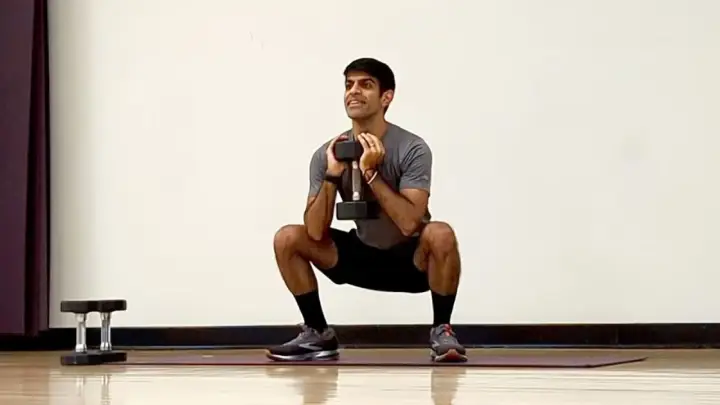
4. Cable Kickbacks (High Angle)
One of the most common exercises that target the upper glute is the kickback.
- Connect the ankle strap to the low cable.
- Kick backwards behind in the air and a little upwards at approximately 45 degrees.
- Shoulder straight, do not bend your lower back.
The exercise is also good for strengthening the outer glutes as you tilt the angle.
5. Lateral Band Walks
An example of a muscle activator of the glute medius and outer glutes.
- Wrap a band around your knees or ankles.
- Bend forward on the hips and knees, take steps laterally, but maintain tension.
- Take steps slowly and deliberately–do not slap feet back together.
6. Curtsy Lunges
The upper and outer glutes are exercised simultaneously in the curtsy lunge.
- Lunge: Lunge with one foot diagonally behind the other.
- Women are to maintain a straight posture with their hips in a straight position.
- Restart and do it on the opposite side.
The curtsy lunges also provide more focus on the upper glutes as compared to side lunges.
7. Step-Ups (High Box)
Step-ups are tough on the glutes, particularly when the step is made on a higher surface.
- One foot on a bench or a hard box.
- Lift yourself on your heel, but do not release tension in the glutes.
- Control and repeat lower.
The more the steps, the more the upper glute is activated.
8. Donkey Kicks
One of the most effective isolation exercises for the glutes is donkey kicks, which are not difficult.
- Starting at the feet, head to shoulders, legs to hips.
- Raise one leg, with the knee bent at 90.
- Pinch your buttocks without lifting your spine.
It is one of the essentials when it comes to making the glutes appear not flat.
9. Frog Pumps
Lesser-known but a powerful exercise to utilize in glute activation is the frog pump.
- Position yourself lying on your back with the soles of your feet pressed together, with your knees wide.
- Lift your buttocks straight up into the air and squeeze your buttocks together at the top.
- Do large reps (2030) to achieve optimum pumping.
They are good as a post-workout burnout.
10. Sissy Squats (Glute Variation)
Although the sissy squat is generally quad-focused, there is a glute-focused variant of the squat.
- Stand erect, then squat down, leaning forward a little.
- Maintain tension in the glutes and lift with heels.
- Safety: Use a support or machine where necessary.
This is a progressive movement that tests balance and glute power.
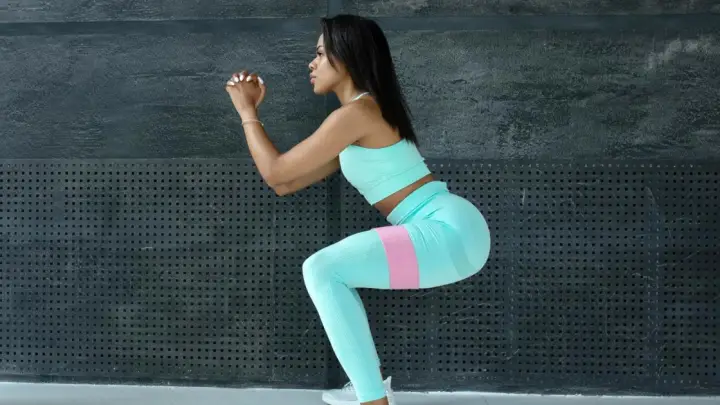
Training Tips for Upper Glutes
- Progressive Overload – Growth through adding progressively with weight or resistance.
- Frequency – Train glutes 2-3 times every week, 48 hours between sessions.
- Protein Intake- Consume 1.6-2.2 grams of protein per kilogram of body weight per day to help build muscle mass.
- Mind-Muscle Connection -Squeeze the glutes at the apex of each rep.
- Blends Compounds and Deaths- Hip thrusts and squats add the bulk, whilst donkey kicks and frog pumps define the lines.
- Avoid Mistakes -When it comes to stalling growth, avoid squats, hip hinge movements, and poor posture -they alone are insufficient.
Signs Your Glutes Are Growing
- More roundness and hardness of the upper glutes.
- Better performance of hip thrusts and bridges.
- Flatness of the buttocks is less than usual at the top.
- Dressing in ways that are unsuited to the hips and waistline.
The average time that one can see the results is 8 -12 weeks of training and diet.
Additional Considerations
StairMaster & Glutes – Climbing exercises might help in the growth of the glutes when performed with resistance, but they should not be used as a substitute for strength training.
Russian twists -Although this is primarily an ab workout, core strength contributes to the stability of the glutes and posture indirectly.
Hardest Glute Exercise Most people would claim the hardest is heavy barbell hip thrusts or deficit Bulgarian split squats.
Determining whether the Glutes are underdeveloped or not. How to teFlatnessness on the top, quad dominance when squatting, and poor hip stability are some of the indicators.
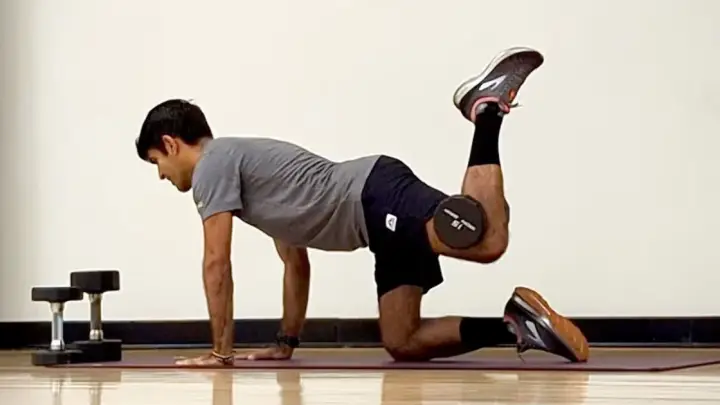
Conclusion
It is not necessary to build your upper glutes just to be seen as good-looking–they are also about strength, stability, and functionality. Combining both balance and splendor of lifts, such as hip thrusts and Bulgarian split squats, with donkey kicks, frog pumps, and lateral band walks, you will be able to turn a flat upper glute region into a robust rear shelf.
When you couple these exercises of the upper glutes, proper nutrition, progressive overload, and regularity, you will be rewarded in a few months. Note: the glutes can be among the most difficult muscles to develop; however, the benefits are well justified in the end when one is patient and concentrates.
Frequently Asked Questions
1. What is the effect of upper glute shape improvement?
Exercises of the upper glute work the gluteus medius and upper maximus to produce a lifted, shelf-like appearance to stabilize the hips, improve posture, and balance.
2. Time to depict results?
Through regular training, appropriate protein consumption, and progressive overload, one can observe the visible growth in the upper glutes in 812 weeks of regular exercise.
3. Are hip thrusts a good exercise to work the upper glutes?
Yes, hip thrusts are also some of the best exercises for the upper glutes. Minor movements in the position of the feet and the torso angle can be used to optimize the top glute shelf activation.
4. What is making my upper glutes not develop?
The glutes are usually flattened at the top because of under-training, improper form, or because lack of isolation exercises. Combining compounds, bands, and isolation exercises is guaranteed to grow.
